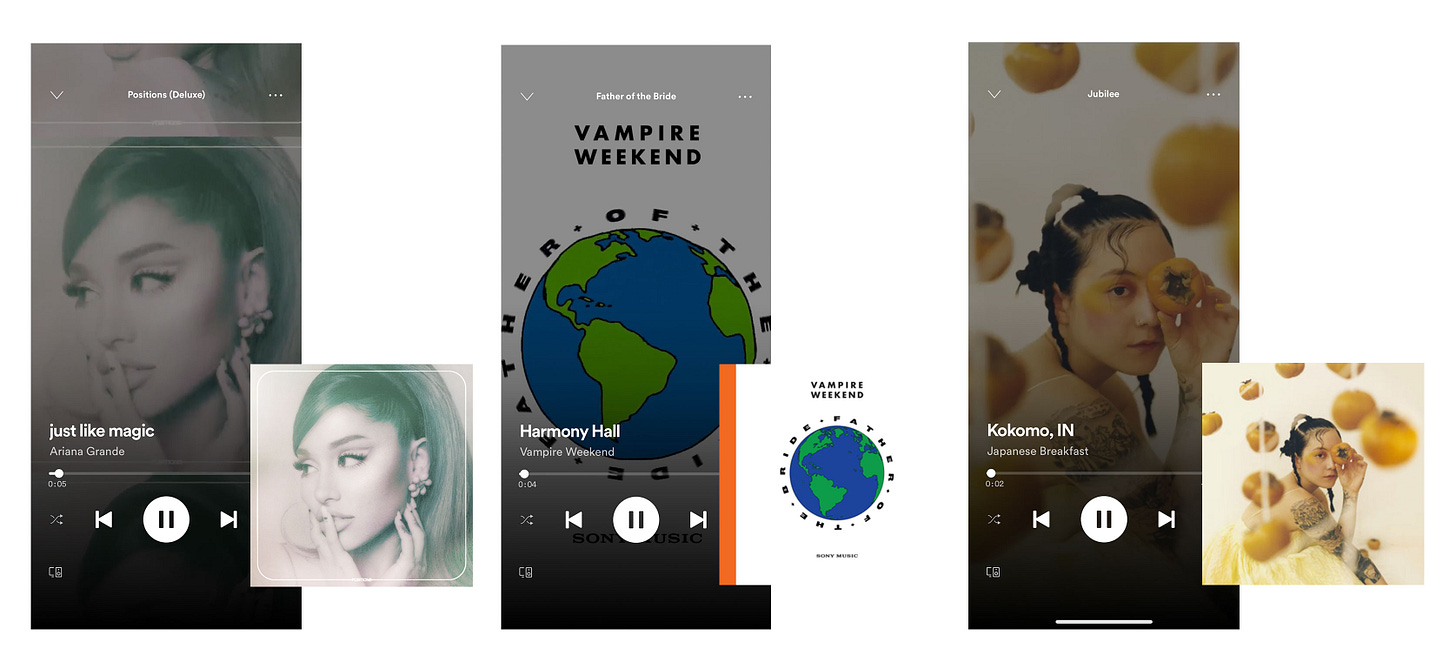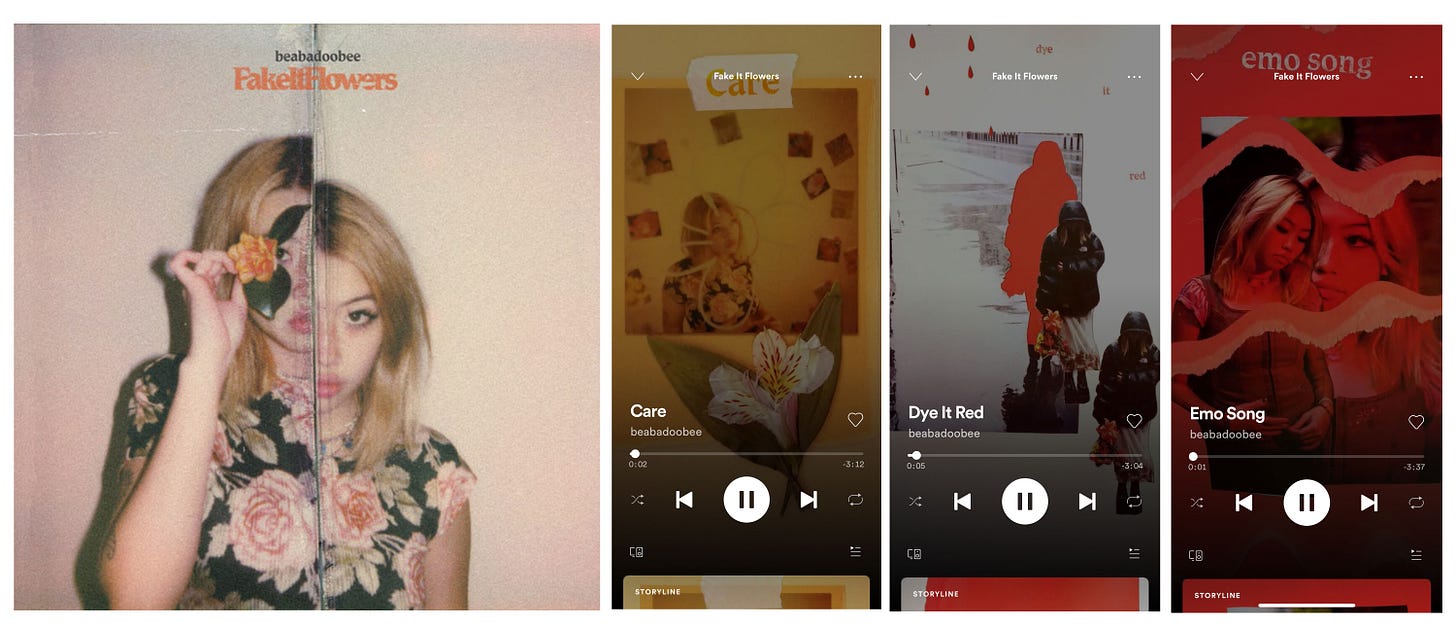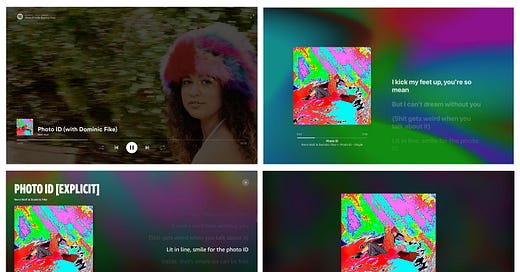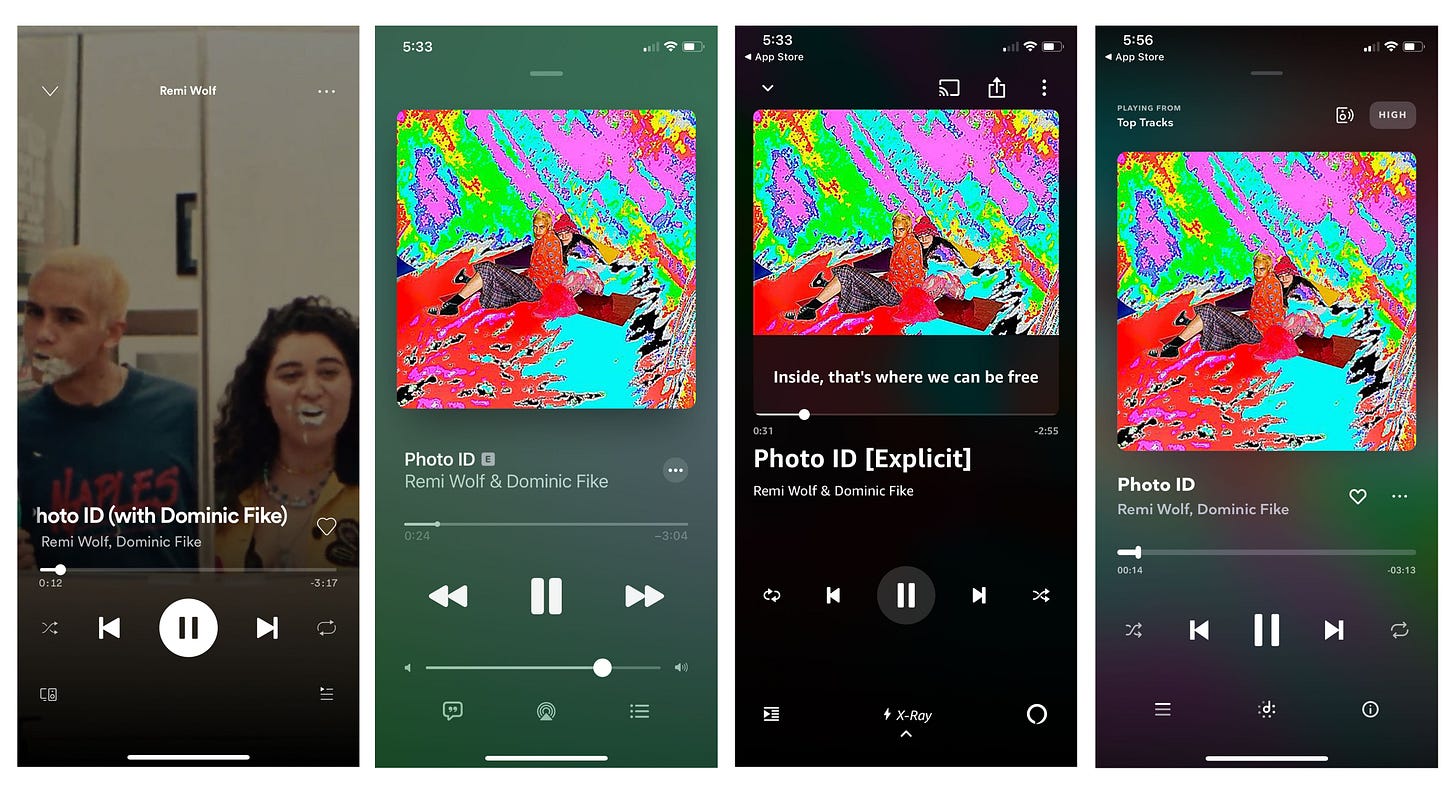Is Spotify Killing the Album Cover?
How the #1 Streaming Platform is Leaving Behind Music's Most Sacred Art
In March of 2021, Spotify announced that it had accumulated a total of 356 million users, officially dubbing it #1 among streaming services.
When Spotify was first founded in 2006, iTunes had been around for half a decade. A year later Apple would introduce the iPhone, changing technology and inadvertently the music industry forever. But it wasn’t until 2015 when the tech giant introduced Apple Music in an attempt to compete with the monster it had blindly created (Jay-Z had already founded TIDAL in 2014 in an effort to create a more artist-forward streaming service and Amazon Music soon followed behind in 2016).
In 2019, Apple officially replaced iTunes with Apple Music, boasting a total of 60 million users. Based on its monthly membership stats, Digital Music News estimates that out of Apple’s 660 million total users across services, Apple Music’s users have specifically grown to 112.5 million within the past two years.
While the streaming services can run numbers all day long, what each platform does to distinguish itself is what matters. TIDAL prides itself on the best sound quality, Amazon on its low, all-inclusive price, Apple on its exclusive content, and Spotify on its user personalized technology and drastically different UX design.
In the comparison above, Spotify stands out like the gifted kindergartener who understands perspective unlike the rest of their peers. I applaud Spotify for its intention to innovate streaming design by integrating the many other visuals that musicians create these days; why not show them off? Yet, in its attempt to differentiate itself from the crowd, the #1 streaming service is sacrificing cover art in the process. To not even include the option to enlarge the cover art is a frustrating reality to not only album art lovers like myself but to musicians as well.
The album cover has historically been what ties the album together. It’s a visual representation of the artist’s music, and in turn, has become a communal piece of art that fans share with one another, recognizing the cover at their favorite record store, on a billboard, on the back of a stranger’s t-shirt on the street.
Between desktop and mobile, the album cover is almost obsolete on Spotify. On desktop, the cover’s miniature thumbnail isn’t more than an inch by inch square on my 15-inch MacBook Pro. On mobile, unless the musician hasn’t uploaded a canvas to the track, the cover is nowhere to be seen. As seen in the comparisons above, if I didn’t already know that Remi Wolf and Dominic Fike were sitting back to back on the cover of “Photo ID”, I’d assume that the cover was just a techno-colored blur from the minuscule thumbnails seen on the artist page.
Spotify first introduced the Canvas, a 3-8 second loop that artists can upload, around 2019, but it didn’t come out of beta until earlier this year (according to Rolling Stone, Taylor Swift’s album Lover was one of the first to use Canvases on all 18 tracks).
Artists who are still indebted to their album art have gotten creative with how to get around the Spotify Canvas by creating animated versions of the cover. While the animation isn’t seen in the comparison below, a full-bleed still image of the cover would be a nice alternative to the Canvas and would still allow Spotify to differentiate itself from its competitors.

On the flip side, the canvas has given some musicians an opportunity to flush out their album creative even further, as seen below. But is reformatting the historical square shape to an inconvenient narrow rectangle, worth the extra work and cost at the end of the day? With Spotify already only paying artists 0.003-0.005 cents per stream, the cost to create a Canvas is stripping musicians’ income even further.

But Sam Duboff, Head of Creator Product Marketing at Spotify told Rolling Stone that “having a Canvas increases sharing by 145 percent.” With statistics like that and social media at the crux of the economy, artists and labels have already begun putting more money towards Canvases and videos. And if Apple, Amazon, and TIDAL follow suit in creating their own version of a more shareable, content-driven platform, is this the beginning of the end for the album cover?
I’m looking for this to be a free educational source since there has yet to be full documentation on the art history of album art. But, if you have $5/ month to spare, it would be super helpful in furthering my research. Or if you think a friend might enjoy this, the best way to pay it forward is by sharing!





